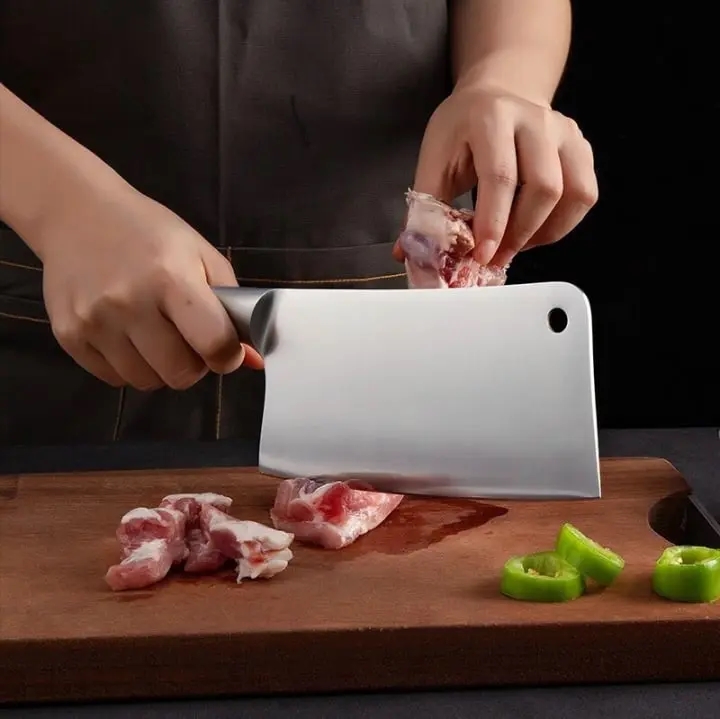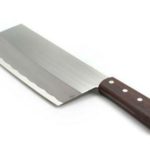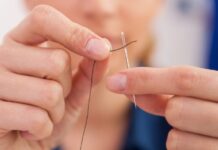A knife is a commonly used tool in cooking. There are many types of kitchen knives with one or more round holes near the blade or near the back. These holes on the knife body do not appear “ungraceful” but they have certain functions.
Prevents food from sticking to the knife
The round holes on the knife body will minimize the amount of food stuck on the surface of the knife. The meat will automatically fall off, so you don’t need to use your hand to separate it.

There are 2 common hole positions on the knife: at the head and along the body
Physically speaking, when we cut, the atmospheric pressure outside will cause the cut food to stick to the knife blade. Having round holes along the knife blade will solve this problem and save cooking time.
Relieves pressure when chopping, ensuring knife durability
The small holes at the knife head usually appear on large knives used for chopping bones, mincing meat, and there is only one hole. According to the explanation of experts, knives with round hole designs absorb collision and relieve pressure.

The round hole at the knife head helps relieve pressure when chopping.
Specifically, when chopping food with strong force, pressure will spread throughout the knife body and may cause vibration or breakage. With a hole at the knife head, the force will be dispersed to avoid damage and preserve the durability of the knife.
Hanging the knife up high
In addition, the round hole is also used to hang the knife for draining water before storing it neatly in a knife holder or cabinet to ensure hygiene. For families without specialized kitchen storage boxes, they can hang the knife neatly and safely, making the kitchen space tidy, organized, and at the same time saving storage space for the family.
According to VTC News
































